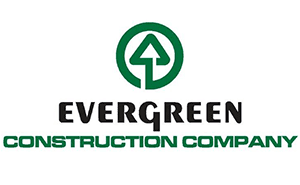
This past Friday afternoon the North Carolina Housing Finance Agency (NCHFA) published the list of projects that have submitted preliminary applications for 2020 Low-Income Housing Tax Credit (LIHTC) allocations.
The competitive 9% credit program received 149 applications from across the state – 138 being new construction projects and 11 rehabilitations. There were also 20 projects applying for tax-exempt bonds. The 9% applications represent the potential creation of over 7200 units of affordable rental housing for families and seniors.
Overall, there was a slight decline in the total number of applications from 2019. The exact number of applications will likely change this week, when some applications are expected to be withdrawn from consideration.
The 9% program has been oversubscribed for numerous years and has become increasingly so. In 2019 the average ratio of the number of applications to the number of projects awarded credits was 4 to 1. Using the 2019 per-unit LIHTC averages, analysis from Mark Shelburne of Novogradac shows that the ratio for 2020 has increased to 5 to 1 for most of the state (Central, East & West regions). Using Shelburne’s analysis, the estimated number of units that would result of the estimated allocations of 9% credits is summarized in the table below, alongwith the ratio of applications to awards and estimated number of projects awarded:
| 9% Housing Credits | |||||
| Ratio of Applications to Awards | Estimated # Projects Awarded | Proposed # of Units* | Estimated # of units** | ||
| Central | 6.1 | 6 | 2729 | 408 | |
| West | 6.3 | 4 | 2609 | 252 | |
| East | 3.5 | 9 | 2559 | 672 | |
| Metro | 3.6 | 8 | 1900 | 594 | |
| 9797 | 1926 | TOTAL | |||
| *If all applications were able to be funded. | |||||
| ** Estimated number of units resulting from awards. | |||||
As the table shows, the competition for financing for affordable rental housing is steep. One of the factors contributing to the tightening competition is the lack of funds in the Workforce Housing Loan Program (WHLP). NCHFA typically allocates WHLP funds along with housing credits as a means of layering additional subsidies, allowing NCHFA to fund more developments across the state. Applicants request these additional sources along with their LIHTC applications.
It is too early to know what the specific impact of the lack of WHLP funds will be, however, it appears likely to alter the structure of how affordable housing is financed and where it is built. While LIHTC is a major source of financing for affordable housing developers, they also rely on sources that can help fill gaps in financing such as WHLP. NCHFA’s remaining source for gap financing is the Rental Production Program (RPP). For 2020, requests for RPP funds increased by about 38%, going from 61 requests in 2019 to 84 in 2020. It is too early to know for sure, however, there is likely some relationship to the lack of WHLP funds.
Another potential trend that may come out of the loss of WHLP for 2020, is that developers will likely seek out areas of higher wealth and lower poverty, in an effort to ensure deals are able to pencil out, potentially favoring suburban and affluent urban neighborhoods over rural and high-poverty areas of the urban core. Already we can see that there was a 37% decline in applications for projects located in low-income counties, dropping from 19 applications in 2019 to only 12 for 2020. If WHLP is not funded in 2021 it is likely that the trend will be to develop away from city centers and rural areas with high concentrations of poverty.
Many developers expect that there will be a reduction in the total number of units produced, however, the exact effects of the lack of WHLP will become more clear in May when the final applications have been submitted. The Coalition will provide on-going analysis and information throughout the 2020 LIHTC allocation cycle.
Note: Number of applicants may drop as some applicants will likely withdraw their applications after seeing the range of competition.








